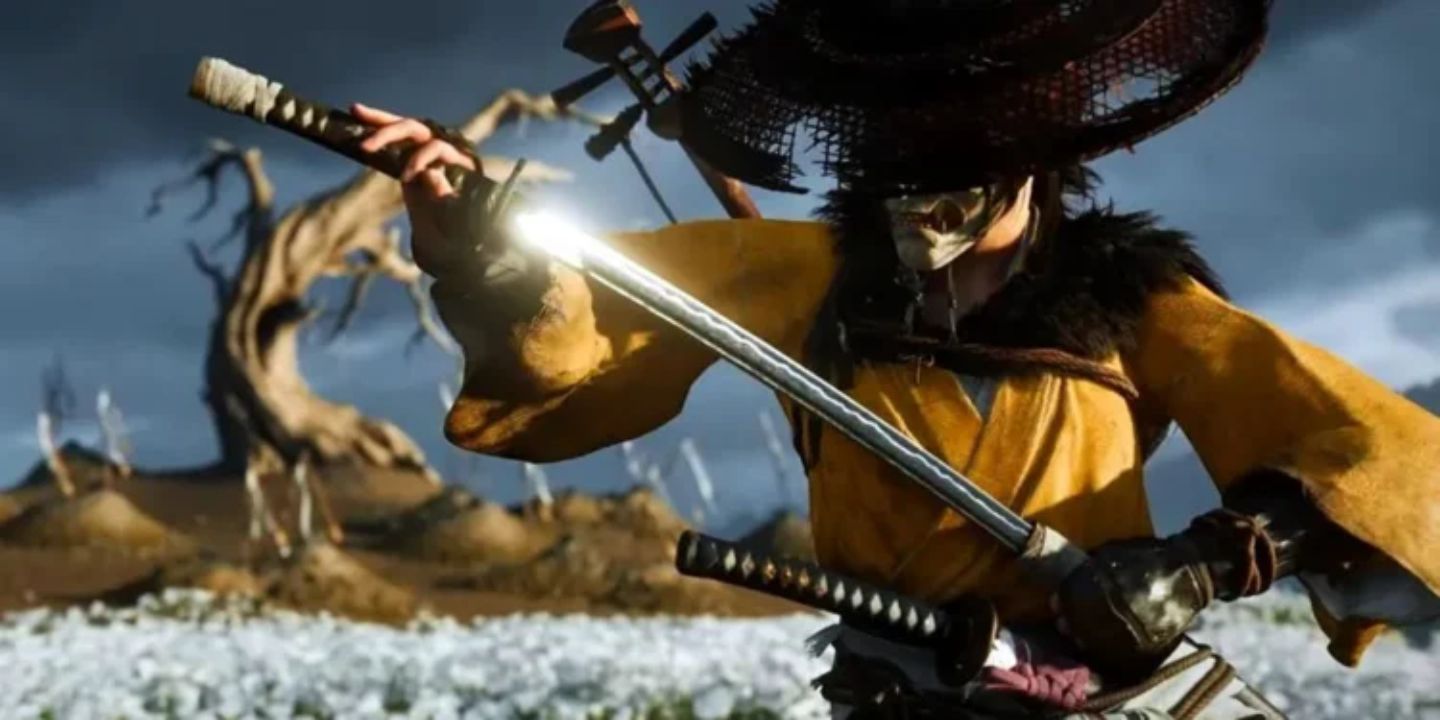The upcoming action-adventure game Ghost of Yotei has been generating excitement among fans of samurai-inspired combat. With its cinematic battles, fluid swordplay, and focus on skillful dueling, players are already comparing it to titles like Ghost of Tsushima, Sekiro: Shadows Die Twice, and Nioh. But one of the most frequently asked questions is:
👉 Does Ghost of Yotei have a lock-on system?
In fast-paced melee combat games, the ability to “lock on” to an enemy can make or break the experience. Lock-on allows players to fix their targeting onto one opponent, ensuring that attacks, blocks, and dodges stay focused. However, Ghost of Yotei approaches combat differently, and the developers have made deliberate design choices that change how targeting works.
This article explores whether lock-on exists in Ghost of Yotei, how targeting mechanics function, why the developers may have avoided a traditional lock-on, and practical strategies to master combat even without one.
Does Ghost of Yotei Have a Lock-On System?
As of now, Ghost of Yotei does not include a classic lock-on mechanic like those seen in Dark Souls or Elden Ring. The developers have not announced a built-in lock-on feature, and early gameplay previews suggest that the game emphasizes fluid combat and environmental awareness over rigid targeting systems.
This choice mirrors the philosophy behind Ghost of Tsushima, which intentionally omitted a lock-on. The reasoning was to keep combat cinematic, immersive, and less predictable. By avoiding a lock-on, players must stay fully aware of enemy positioning and camera control, leading to more dynamic encounters.
Why No Lock-On? The Design Philosophy
The absence of a traditional lock-on is not a limitation—it’s a design choice. Here’s why the developers may have chosen this path:
- Cinematic Flow – Lock-on can make fights feel mechanical, whereas free-flow targeting enhances fluid animations and cinematic duels.
- Environmental Awareness – Without lock-on, players must constantly monitor surroundings, leading to more strategic combat decisions.
- Dynamic Duels – Lock-on tends to narrow focus, but Ghost of Yotei seems to encourage adaptability when facing multiple opponents.
- Spiritual Successor Influence – Since Ghost of Yotei draws inspiration from Ghost of Tsushima, it inherits a similar combat philosophy where freedom and movement are prioritized.
This approach may feel strange at first to players used to Souls-like games, but it creates battles that are less rigid and more immersive.
Understanding Targeting in Ghost of Yotei
Even though there is no hard lock-on system, Ghost of Yotei provides soft targeting mechanics that help you stay aligned during combat.
Soft Targeting and Camera Behavior
- The camera naturally tilts toward the enemy you’re facing.
- Attacks are slightly magnetized toward nearby foes, so strikes connect more reliably.
- When moving toward an opponent, the game subtly “assists” your orientation.
This system feels natural rather than restrictive, giving you the benefits of focus without the drawbacks of tunnel vision.
Weapons and Targeting Sensitivity
Ghost of Yotei features a variety of weapons—katana, odachi, spear, twin blades, and more. Each has different targeting demands.
- Katana – Ideal for close-quarters precision, benefiting from tighter control.
- Spear/Odachi – Wide swings require careful positioning; you must face enemies directly.
- Twin Blades – Faster weapons demand constant camera adjustment to keep pace.
Because you can switch weapons mid-battle without pausing, adapting your loadout is a major part of combat strategy.
Positioning: The Key to Combat Success
Without lock-on, positioning becomes your greatest ally.
- Keep enemies in front of you at all times.
- Circle around opponents to control angles.
- Use dodge-rolls or parries to reset your stance.
- When surrounded, reposition to avoid being flanked.
In Ghost of Yotei, combat is not just about attacking—it’s about where you stand and how you face your foes.
Tips to Simulate a Lock-On Experience
Even though lock-on isn’t built into Ghost of Yotei, you can mimic its advantages by mastering certain techniques.
- Control Character Orientation – Always nudge your movement stick toward your intended target before striking.
- Active Camera Management – Keep adjusting the camera; don’t let it drift. Resetting ensures enemies remain visible.
- Switch Weapons as Needed – Use faster blades for agile duels and heavier weapons when you need sweeping arcs.
- Maintain Ideal Distance – Too close, and you’ll misfire attacks. Too far, and you’ll leave openings. Stay at a mid-range sweet spot.
- Use Dodge and Parry to Reorient – If you lose focus, use a defensive maneuver to reset your angle.
With practice, these habits will give you the control of lock-on without the rigidity.
Comparing Ghost of Yotei to Other Games
To better understand why Ghost of Yotei avoids lock-on, let’s compare it to similar titles:
- Dark Souls / Elden Ring – These games rely heavily on lock-on to manage stamina and precision. Ghost of Yotei prefers fluidity over rigidity.
- Sekiro: Shadows Die Twice – Uses lock-on but emphasizes parries and posture. Ghost of Yotei leans closer to Sekiro’s speed but without a fixed system.
- Ghost of Tsushima – Its free-flow combat directly influenced Ghost of Yotei, encouraging awareness over target fixation.
This positions Ghost of Yotei as a hybrid—cinematic like Tsushima, but challenging like Sekiro.
Advanced Combat Strategies
To thrive in Ghost of Yotei, adopt advanced strategies that work with its unique targeting system:
- Crowd Control – Use wide-arc weapons when surrounded, then switch to katana for duels.
- Enemy Prioritization – Take down archers and fast attackers first; slow heavies can wait.
- Terrain Advantage – Use walls, slopes, and obstacles to control enemy positioning.
- Stance Switching – Adapt stances mid-combat to exploit weaknesses (if multiple stances exist).
- Rhythm Fighting – Instead of spamming attacks, time your strikes, blocks, and dodges for maximum efficiency.
What If Lock-On Is Added Later?
Game developers often update features post-launch. If Ghost of Yotei eventually introduces a lock-on system, here’s what it might look like:
- Toggle Option – Lock-on could be enabled or disabled in the settings.
- Target Cycle – One button locks onto a foe, another cycles through enemies.
- Auto-Switch – If the locked target dies, focus automatically shifts to the next threat.
While lock-on would help in one-on-one duels, it could reduce flexibility in group battles. A hybrid option would give players choice without compromising design.
Common Mistakes to Avoid Without Lock-On
- Ignoring Camera Control – Forgetting to adjust your view leads to blind spots.
- Overcommitting to Attacks – Without lock-on, missed swings leave you exposed.
- Poor Weapon Choice – Using a heavy weapon against a nimble enemy makes targeting harder.
- Tunnel Vision – Don’t focus on one enemy if others are flanking you.
Avoiding these pitfalls will sharpen your skills and make combat smoother.
Community Opinions: Lock-On vs. Free Flow
The community is split on lock-on mechanics:
- Pro Lock-On Players argue it increases precision and accessibility, especially for newcomers.
- Anti Lock-On Players believe it restricts freedom and makes combat predictable.
Ghost of Yotei seems to take the middle path, providing soft targeting for accessibility while keeping freedom for immersion.
Conclusion
While Ghost of Yotei does not feature a traditional lock-on system, it provides enough tools to give players control through soft targeting, responsive camera mechanics, and weapon versatility. The absence of lock-on is an intentional design choice, encouraging players to focus on positioning, adaptability, and situational awareness.
By practicing orientation control, managing the camera actively, switching weapons wisely, and using defensive maneuvers strategically, you can simulate the benefits of lock-on without losing the cinematic flow the game is designed for.
If developers add lock-on later, it will likely arrive as an optional feature. But until then, mastering Ghost of Yotei’s free-flowing combat system will reward you with battles that feel dynamic, immersive, and deeply satisfying.
Read Also:

